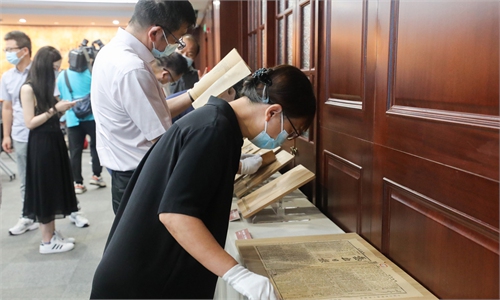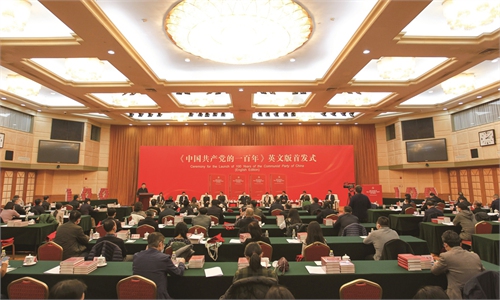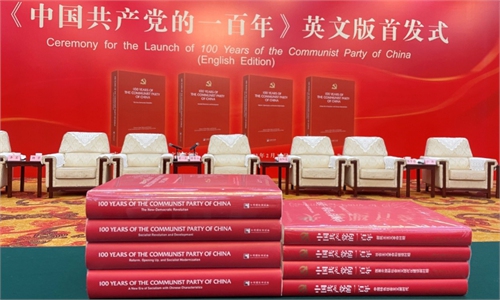ARTS / CULTURE & LEISURE
Young people visit revolutionary sites, inspired to strive for better future
Carrying forward red culture
Editor's Note:
On June 17, Chinese President Xi Jinping visited the revolutionary site at Wangjiaping in Yan'an, Northwest China's Shaanxi Province. Xi has called Yan'an a shrine for the Chinese revolution, and said that strength should be drawn from the "Yan'an Spirit."
Xi once published an article in 2022 in the Qiushi Journal, a flagship magazine of the CPC Central Committee, on carrying on the Party's fine revolutionary traditions and conducting and promoting the Yan'an Spirit. The glorious traditions and fine conduct of the CPC that were cultivated and carried forward during the years in Yan'an remain an invaluable source of inspiration for the Party and should be passed down from generation to generation, Xi said in the article.
China's rich red cultural heritages, including Yan'an Spirit and Red Boat Spirit, have not only guarded us and secured the victory of the revolution, but also enlightened and inspired us to continue our new cultural mission in the new era.
Global Times reporters Xu Liuliu, Wu Jie, Huang Lanlan and Chen Xi visited China's renowned revolutionary bases to explore how China's precious red spirit continues to inspire young people.
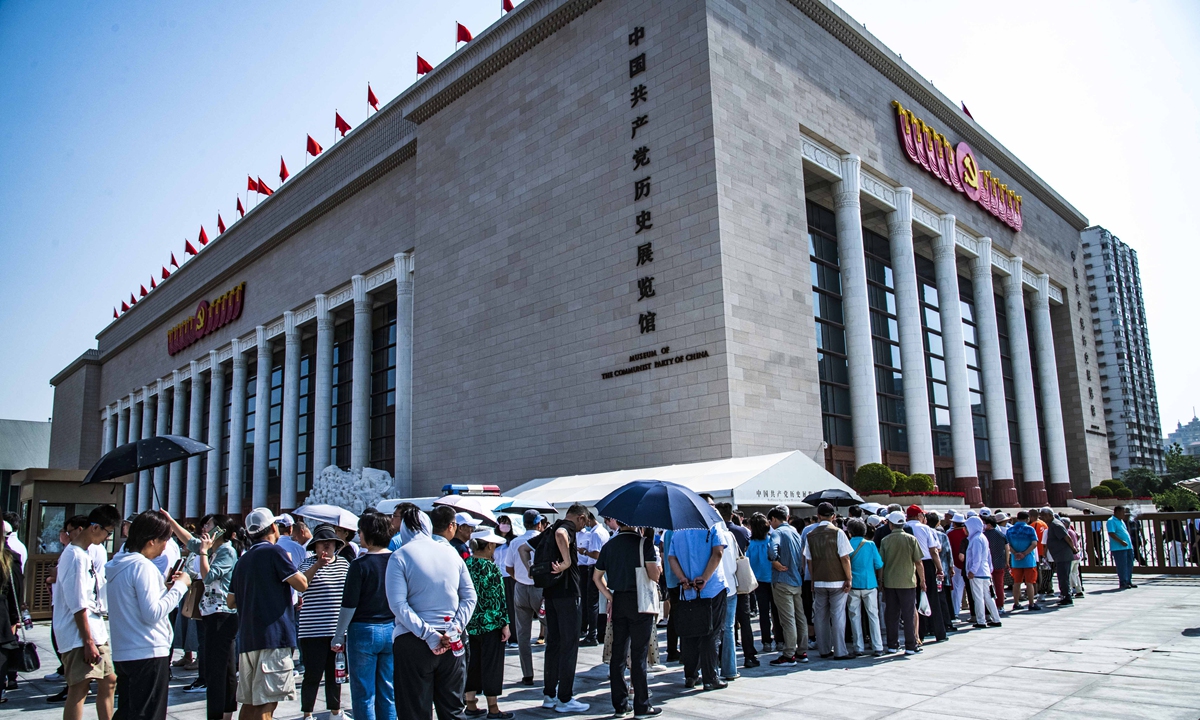
On the day of the 103rd anniversary of the founding of the Communist Party of China (CPC), 10-year-old Hu Xintong was one of the many visitors who flocked to the Museum of the Communist Party of China in Beijing to learn about the history of the Party with his father.
Hailing from Southwest China's Chongqing Municipality, which is home to some renowned CPC historical sites, Hu's father told the Global Times that it is important for the younger generation to learn about Party history.
"We came to the museum to celebrate the birthday of the CPC. We're impressed by the variety of the historical and revolutionary relics displayed here. In Chongqing, visiting historical sites and museums is a common way to help children connect emotionally with China's history and develop a stronger sense of national identity," he said.
Since its opening on June 18, 2021, the museum has welcomed over 3.5 million visitors and hosted more than 10,000 group visits, among which 550,000 visits were made by young people, the Xinhua News Agency reported on Sunday.
The three-floor museum offers a centennial exhibition of the CPC, which chronicles in panoramic detail the magnificent history of the Party's century-long journey through over 2,500 images and more than 4,500 historical artifacts.
A museum guide told the Global Times on July 1 that the exhibition provides youngsters a firsthand experience of CPC history and fosters a deeper sense of patriotism than what can be gained from textbooks alone.
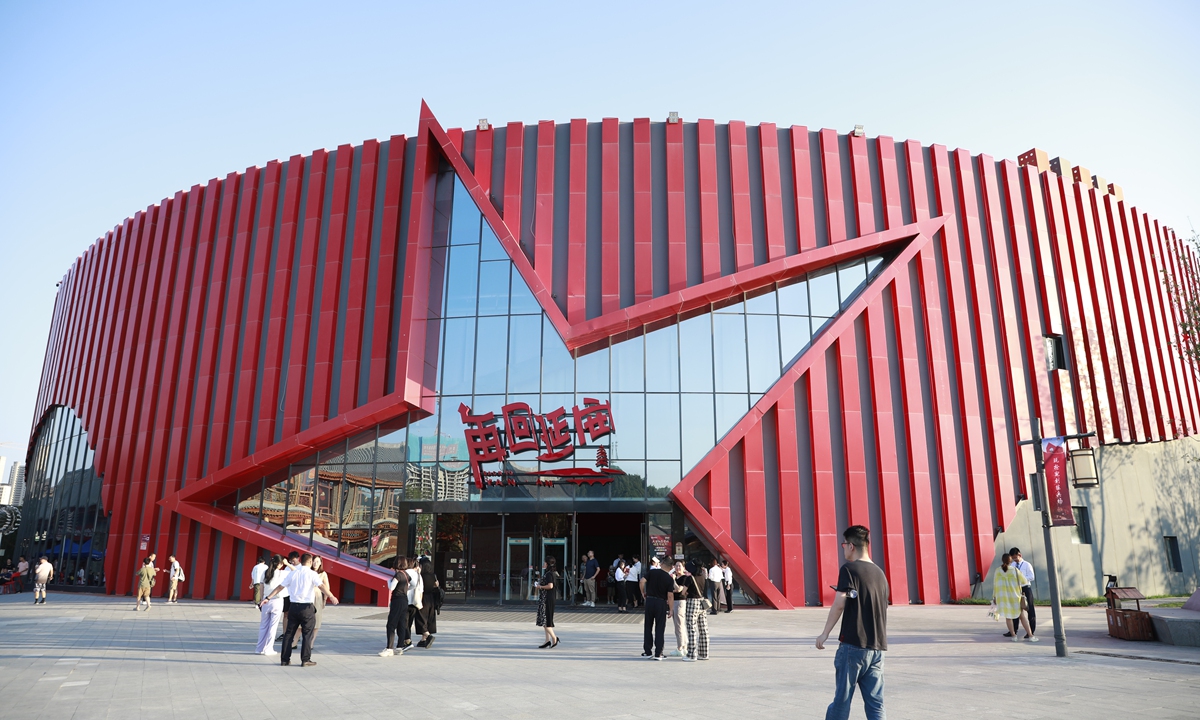
Yan'an Spirit
In June, President Xi Jinping visited the revolutionary relics at Wangjiaping, in Yan'an, a revolutionary base in Northwest China's Shaanxi Province, and called for efforts to vigorously promote and carry forward the Yan'an Spirit.
Yan'an was once the base for the CPC during the 1930s-40s, before the Party won the revolution and founded the People's Republic of China in 1949.
During a previous visit to Yan'an in 2022, Xi said that revolutionary sites are like a book that is worth reading all the time. He stressed that the glorious traditions and fine conduct of the CPC cultivated and carried forward during the years in Yan'an, the Yan'an Spirit characterized by firm and correct political direction, the ideological line of emancipating the mind and seeking truth from facts, the principle of serving the people wholeheartedly and the style of self-reliance and hard work are an invaluable source of inspiration for the Party and should be passed down from generation to generation.
Li Xiaoyan, director of the Central Compilation and Translation Press, told the Global Times that learning about this history can strengthen people's confidence in China's path of development.
At revolutionary education bases, the public can match the modern history of China that they learned from textbooks and films with specific real locations. They can gain a deeper understanding of the CPC's fine traditions and glorious history by exploring historical sites and viewing relics like the belongings of martyrs, thereby reinforcing their confidence in China's development path, history, and culture, Li noted.
She pointed out that China's revolutionary history embodies the Chinese people's great spirit of patriotism and unyielding struggle. As sources of invaluable spiritual wealth for the CPC, revolutionary culture and history play a vital role in solidifying Chinese people's ideals and beliefs and strengthening their spiritual resolve to strive for the realization of the Chinese Dream of the great rejuvenation of the Chinese nation.
Wu Xiangdong, head of the Museum of the CPC, told Xinhua that the history of the Party serves as the world's most vivid and compelling textbook. Wu also emphasized efforts to give full play to the value and role of cultural relics related to the CPC's revolutionary traditions and better utilize exhibitions of Party history to advance relevant education programs.
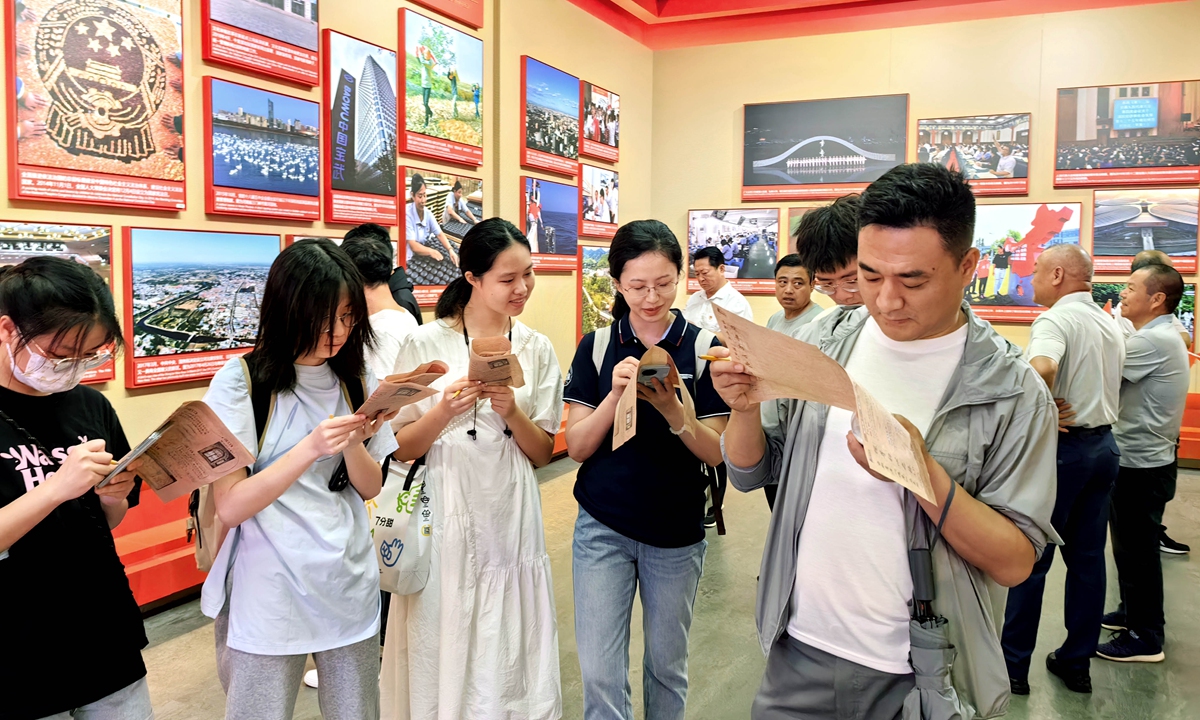
Youth-friendly edutainment
Yin Wan "enters" a virtual world after putting on a VR (virtual reality) headset. Enjoying a 360-degree panoramic view of her surroundings, she boards a ship at a pier in old Shanghai during the early 20th century.
Following a digital tour guide, Yin sees workers marching for their rights and witnesses the first National Congress of the Communist Party of China in July 1921.
The 20-minute VR tour takes Yin back to the remote and hard years, when the CPC forerunners strove to find a way to save millions of Chinese people from weakness and poverty.
"It was a quite novel and interesting experience for me," Yin told the Global Times. "I've never felt so close to that history before."
To mark the 103rd founding anniversary of the Party on July 1, the Memorial of the First National Congress of the CPC in Shanghai announced the launch of China's first-ever red culture-themed LBE (location-based entertainment) VR immersive experience exhibition. The exhibition will run as a trial and formally open to the public on July 23.
The VR exhibition is the memorial's newest attempt to carry out red education in a vivid, youth-friendly way, said Ruan Jun, deputy director of the memorial.
"With the help of digital technology, users 'travel' more than 100 years to Shanghai's past and experience 'in person' the moment of a great political party's birth," Ruan told the Global Times on Monday.
"Through that, we try to transmit the profound history and spirit of the CPC to the public, particularly young people, in a relaxed and edutainment way," Ruan said.
As a witness to the CPC's early development in the early 20th century and now a representative red tourism attraction that combines sightseeing and red education, the memorial in recent years has been working hard to attract young visitors through a variety of interesting means.
For instance, one of its self-made short films, which tells the story of some underground CPC members in Shanghai risking their lives to fight against the enemy in the 1930s, has won applause from Gen-Zers with a fast narrative pace, plot twists and dramatic elements that are popular among young people.
Ruan noted that among the visitors to the memorial, more than 70 percent are under the age of 45.
"Be it ideological or political education, or cultural tourism experiences, we hope that we can bring them to young people in a 'lighter' way," he said.
As an important witness of the CPC's founding, the memorial in Shanghai attracts a growing number of visitors, with a record-breaking 1.36 million visits in the first half of 2024.
Learning and promoting red culture is essential for injecting strong spiritual impetus into the new era, the memorial's director Xue Feng told the Global Times on Monday.
"We believe that the commemorative activities being held at the memorial, such as the oath-taking ceremony, are a powerful means of Party education for attendees, particularly Party members," he noted. "This teaches us, in the new era, to stay true to our original aspirations and founding mission, and further fulfill our duties as Party members."
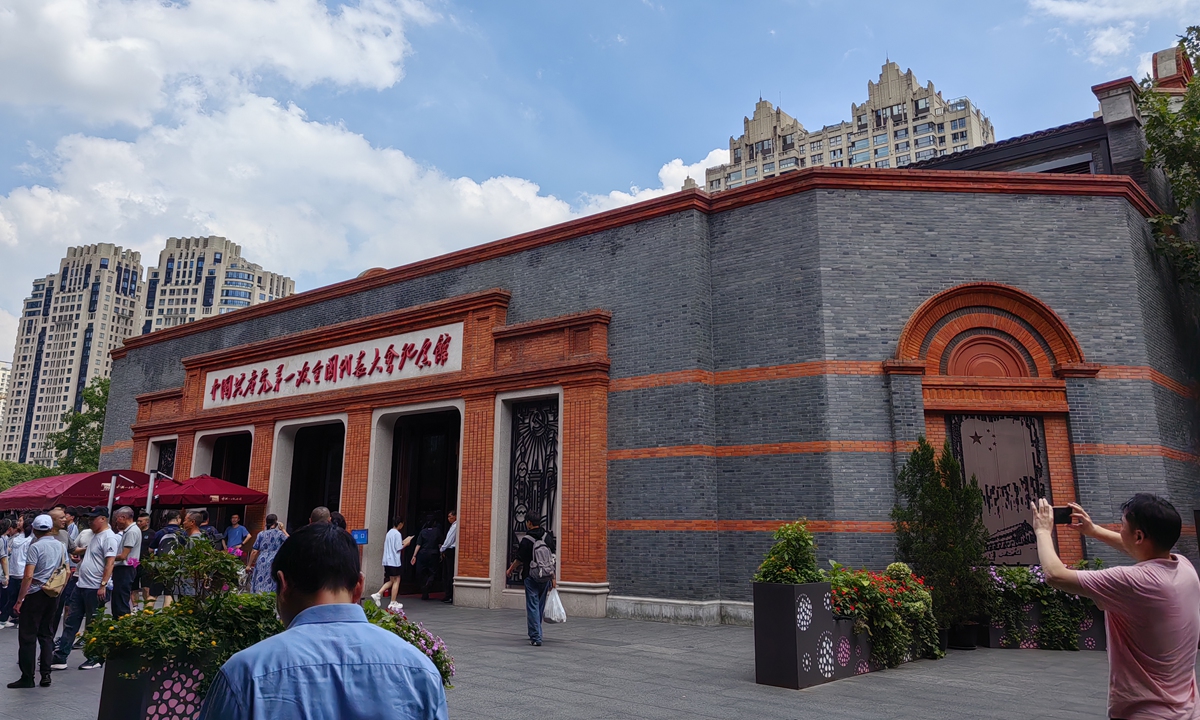
Same roots
In Chongqing, the Memorial Hall of the Palace Museum Collection's Evacuation to the South in Chongqing is one of the old revolutionary sites bustling with tourists from different places, including some from the island of Taiwan.
The memorial hall opened to the public in 2021 to commemorate the unprecedented relocation of the Palace Museum's collection from Beijing to the south during the War of Resistance against Japanese Aggression (1931-45) in order to protect them from the war. In 1949, a portion of these cultural relics were shipped to the island of Taiwan by the then Kuomintang authorities during China's civil war.
Zhang Jianmin, head of the research and study tour at the memorial hall, told the Global Times on Wednesday that since the rise of revolutionary study tours, they have designed many research and experiential courses about the history of the southern relocation of the Palace Museum collection.
Last week, a youth summer camp from the island of Taiwan went to the museum to explore its interesting social activities.
Zhang said both the teachers and students at the camp highly complimented the courses and tour, and that he was touched when he heard one elder's comment.
"The elder said that the Chinese mainland and the island of Taiwan have always shared the same cultural roots and history, and that the evacuation of the Palace Museum's collection stood witness to this emotional bond."
Zhang recalled one of the Taiwan compatriots was thrilled when coming to the museum as his late father was one of the staff members who built the Taipei Palace Museum to house the artifacts shipped from the mainland.
"They expressed a strong willingness to hold more cultural exchanges on both sides of the Taiwan Straits," Zhang said, adding that he never thought such a tour could also help contribute to the friendship between both sides of the Straits.
The red culture embedded in China's history embodies a profound patriotic spirit and an indomitable perseverance. As an invaluable spiritual asset of the CPC, the revolutionary legacy that shines at sites across the country is expected to continue to foster a strong national identity, unite consensus, and inspire younger generations.
On June 17, Chinese President Xi Jinping visited the revolutionary site at Wangjiaping in Yan'an, Northwest China's Shaanxi Province. Xi has called Yan'an a shrine for the Chinese revolution, and said that strength should be drawn from the "Yan'an Spirit."
Xi once published an article in 2022 in the Qiushi Journal, a flagship magazine of the CPC Central Committee, on carrying on the Party's fine revolutionary traditions and conducting and promoting the Yan'an Spirit. The glorious traditions and fine conduct of the CPC that were cultivated and carried forward during the years in Yan'an remain an invaluable source of inspiration for the Party and should be passed down from generation to generation, Xi said in the article.
China's rich red cultural heritages, including Yan'an Spirit and Red Boat Spirit, have not only guarded us and secured the victory of the revolution, but also enlightened and inspired us to continue our new cultural mission in the new era.
Global Times reporters Xu Liuliu, Wu Jie, Huang Lanlan and Chen Xi visited China's renowned revolutionary bases to explore how China's precious red spirit continues to inspire young people.

Visitors queue up to enter the Museum of the Communist Party of China in Beijing on June 28, 2024. Photo: VCG
On the day of the 103rd anniversary of the founding of the Communist Party of China (CPC), 10-year-old Hu Xintong was one of the many visitors who flocked to the Museum of the Communist Party of China in Beijing to learn about the history of the Party with his father.
Hailing from Southwest China's Chongqing Municipality, which is home to some renowned CPC historical sites, Hu's father told the Global Times that it is important for the younger generation to learn about Party history.
"We came to the museum to celebrate the birthday of the CPC. We're impressed by the variety of the historical and revolutionary relics displayed here. In Chongqing, visiting historical sites and museums is a common way to help children connect emotionally with China's history and develop a stronger sense of national identity," he said.
Since its opening on June 18, 2021, the museum has welcomed over 3.5 million visitors and hosted more than 10,000 group visits, among which 550,000 visits were made by young people, the Xinhua News Agency reported on Sunday.
The three-floor museum offers a centennial exhibition of the CPC, which chronicles in panoramic detail the magnificent history of the Party's century-long journey through over 2,500 images and more than 4,500 historical artifacts.
A museum guide told the Global Times on July 1 that the exhibition provides youngsters a firsthand experience of CPC history and fosters a deeper sense of patriotism than what can be gained from textbooks alone.

Theater for revolutionary drama play Back to Yan'an on the Red Street in Yan'an Photo: VCG
Yan'an Spirit
In June, President Xi Jinping visited the revolutionary relics at Wangjiaping, in Yan'an, a revolutionary base in Northwest China's Shaanxi Province, and called for efforts to vigorously promote and carry forward the Yan'an Spirit.
Yan'an was once the base for the CPC during the 1930s-40s, before the Party won the revolution and founded the People's Republic of China in 1949.
During a previous visit to Yan'an in 2022, Xi said that revolutionary sites are like a book that is worth reading all the time. He stressed that the glorious traditions and fine conduct of the CPC cultivated and carried forward during the years in Yan'an, the Yan'an Spirit characterized by firm and correct political direction, the ideological line of emancipating the mind and seeking truth from facts, the principle of serving the people wholeheartedly and the style of self-reliance and hard work are an invaluable source of inspiration for the Party and should be passed down from generation to generation.
Li Xiaoyan, director of the Central Compilation and Translation Press, told the Global Times that learning about this history can strengthen people's confidence in China's path of development.
At revolutionary education bases, the public can match the modern history of China that they learned from textbooks and films with specific real locations. They can gain a deeper understanding of the CPC's fine traditions and glorious history by exploring historical sites and viewing relics like the belongings of martyrs, thereby reinforcing their confidence in China's development path, history, and culture, Li noted.
She pointed out that China's revolutionary history embodies the Chinese people's great spirit of patriotism and unyielding struggle. As sources of invaluable spiritual wealth for the CPC, revolutionary culture and history play a vital role in solidifying Chinese people's ideals and beliefs and strengthening their spiritual resolve to strive for the realization of the Chinese Dream of the great rejuvenation of the Chinese nation.
Wu Xiangdong, head of the Museum of the CPC, told Xinhua that the history of the Party serves as the world's most vivid and compelling textbook. Wu also emphasized efforts to give full play to the value and role of cultural relics related to the CPC's revolutionary traditions and better utilize exhibitions of Party history to advance relevant education programs.

Young people explore the Memorial of the First National Congress of the Communist Party of China in Shanghai on July 1, 2024. Photo: VCG
Youth-friendly edutainment
Yin Wan "enters" a virtual world after putting on a VR (virtual reality) headset. Enjoying a 360-degree panoramic view of her surroundings, she boards a ship at a pier in old Shanghai during the early 20th century.
Following a digital tour guide, Yin sees workers marching for their rights and witnesses the first National Congress of the Communist Party of China in July 1921.
The 20-minute VR tour takes Yin back to the remote and hard years, when the CPC forerunners strove to find a way to save millions of Chinese people from weakness and poverty.
"It was a quite novel and interesting experience for me," Yin told the Global Times. "I've never felt so close to that history before."
To mark the 103rd founding anniversary of the Party on July 1, the Memorial of the First National Congress of the CPC in Shanghai announced the launch of China's first-ever red culture-themed LBE (location-based entertainment) VR immersive experience exhibition. The exhibition will run as a trial and formally open to the public on July 23.
The VR exhibition is the memorial's newest attempt to carry out red education in a vivid, youth-friendly way, said Ruan Jun, deputy director of the memorial.
"With the help of digital technology, users 'travel' more than 100 years to Shanghai's past and experience 'in person' the moment of a great political party's birth," Ruan told the Global Times on Monday.
"Through that, we try to transmit the profound history and spirit of the CPC to the public, particularly young people, in a relaxed and edutainment way," Ruan said.
As a witness to the CPC's early development in the early 20th century and now a representative red tourism attraction that combines sightseeing and red education, the memorial in recent years has been working hard to attract young visitors through a variety of interesting means.
For instance, one of its self-made short films, which tells the story of some underground CPC members in Shanghai risking their lives to fight against the enemy in the 1930s, has won applause from Gen-Zers with a fast narrative pace, plot twists and dramatic elements that are popular among young people.
Ruan noted that among the visitors to the memorial, more than 70 percent are under the age of 45.
"Be it ideological or political education, or cultural tourism experiences, we hope that we can bring them to young people in a 'lighter' way," he said.
As an important witness of the CPC's founding, the memorial in Shanghai attracts a growing number of visitors, with a record-breaking 1.36 million visits in the first half of 2024.
Learning and promoting red culture is essential for injecting strong spiritual impetus into the new era, the memorial's director Xue Feng told the Global Times on Monday.
"We believe that the commemorative activities being held at the memorial, such as the oath-taking ceremony, are a powerful means of Party education for attendees, particularly Party members," he noted. "This teaches us, in the new era, to stay true to our original aspirations and founding mission, and further fulfill our duties as Party members."

Memorial of the First National Congress of the Communist Party of China in Shanghai Photo: VCG
Same roots
In Chongqing, the Memorial Hall of the Palace Museum Collection's Evacuation to the South in Chongqing is one of the old revolutionary sites bustling with tourists from different places, including some from the island of Taiwan.
The memorial hall opened to the public in 2021 to commemorate the unprecedented relocation of the Palace Museum's collection from Beijing to the south during the War of Resistance against Japanese Aggression (1931-45) in order to protect them from the war. In 1949, a portion of these cultural relics were shipped to the island of Taiwan by the then Kuomintang authorities during China's civil war.
Zhang Jianmin, head of the research and study tour at the memorial hall, told the Global Times on Wednesday that since the rise of revolutionary study tours, they have designed many research and experiential courses about the history of the southern relocation of the Palace Museum collection.
Last week, a youth summer camp from the island of Taiwan went to the museum to explore its interesting social activities.
Zhang said both the teachers and students at the camp highly complimented the courses and tour, and that he was touched when he heard one elder's comment.
"The elder said that the Chinese mainland and the island of Taiwan have always shared the same cultural roots and history, and that the evacuation of the Palace Museum's collection stood witness to this emotional bond."
Zhang recalled one of the Taiwan compatriots was thrilled when coming to the museum as his late father was one of the staff members who built the Taipei Palace Museum to house the artifacts shipped from the mainland.
"They expressed a strong willingness to hold more cultural exchanges on both sides of the Taiwan Straits," Zhang said, adding that he never thought such a tour could also help contribute to the friendship between both sides of the Straits.
The red culture embedded in China's history embodies a profound patriotic spirit and an indomitable perseverance. As an invaluable spiritual asset of the CPC, the revolutionary legacy that shines at sites across the country is expected to continue to foster a strong national identity, unite consensus, and inspire younger generations.
